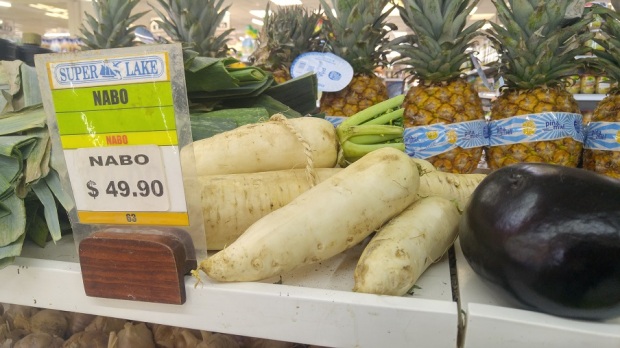In the fall of 2018, I walked a 100 mile segment of the Camino Portugues from the Spanish/Portugues border to Santiago de Compostela in Spain. I recently wrote a book about my pilgrimage, called Walk by My Side: A Solo Journey to Santiago on the Portuguese Camino. It will be published on March 3. I’m sharing the last chapter here on my blog. For information about the book and to order, please click on the cover image to the right.
When I first thought about walking the Camino, my vision was of strolling through beautiful woods, lush vineyards, and waving fields of grass and grain. These are the kinds of places that lend themselves to a peaceful and contemplative journey.
However, modernity has impacted the Camino de Santiago at every step. I won’t judge whether this is good or bad, but as I learned, today’s Camino is not your great grandfathers Camino. Urban growth, electronic technology, cheap airfare, and even rising standards of living, have made the modern Camino more accessible to more people than at any time in history.
Centuries ago, people found their way to Santiago on rustic trails and byways, many of which were replaced long ago with modern thoroughfares. Pilgrims came on foot, on horses and donkeys, on carts, and the rich came by carriage. Today, the Camino welcomes bicyclers and the physically challenged with their own defined routes.
Cities and towns that were once small villages have expanded into sprawling suburbs that have encroached on the ancient way. In many places, the Camino route is shared with modern highways and suburban streets. Once bucolic paths are bordered with ugly factories, large box stores, and their massive parking lots.
The statistics show that the number of people walking the Camino continues to increase every year. It’s also not surprising that, as the baby boomer generation reaches retirement age, the number of pilgrims over-sixty is growing as a percentage of all pilgrims. This unbridled growth inevitably puts a strain on the entire system, whether it be the trail system, maintenance of markers, or the support services along the routes. In addition, I’ve heard complaints from other pilgrims about over-crowding on certain sections of the Camino, especially the 100 kilometer section from Sarria to Santiago.
These changes are a concern of the Church and Pilgrim Office in Santiago. They are exploring ways to preserve the historical traditions and promote the religious nature of the pilgrimage in the face of modern changes. While the 100 kilometer requirement for a compostela only came into being in 1993, there are discussions of either increasing the requirement or doing away with it entirely.
There is little we can do about what happened in the past. Of more concern to me, even as a non-Catholic, is preserving the spiritual and physical beauty of the pilgrimage experience for future generations.
On the positive side, the growth of participation has given rise to new support services, including restaurants, albergues (hostels), hotels, as well as other travel services which make a pilgrimage easier and more accessible to a wider variety of people such as me. In addition, some of these services have helped breathe new life into small villages along the route.

There are as many ways to walk the Camino as there are people who do it. A lot of people freelance it. They throw a pack on their back, start hiking, and stop at an albergue whenever they’ve had enough for the day. Others, like me, plan every detail. And there are others still, like my friend Connie, who used a planning service, like a travel agency, to make all her arrangements. And, there are all sorts of variations in between.
The modern Camino enables pilgrims to plan their experience from an a la carte menu of options. Traditionally, pilgrims stayed and ate in albergues. The opportunities for this experience still abound. But, albergues have changed too. I stayed in two private albergues with modern bathroom facilities, mattresses better than my own at home, and semi-private rooms.
However, many albergues don’t accept reservations and work on a first-come-first-served basis. During busy seasons, it can be difficult to find accommodations. My friends, Jim and Kathy, after slogging through a cold rain all day couldn’t get into an albergue at which they were planning to stay. They needed to walk a few kilometers more before they found an albergue that had room. I’m sure that experience disheartened them. Obviously, pilgrims want to avoid such situations, so they often rise early and stop early…by 2 or 3 pm.
Technology has played a huge role in how one plans for and executes a Camino. Just a few examples include the accessibility of information, the ease of finding accommodations, GPS capabilities, and finding convenience services. It’s all there on the Internet.
Many of the guide books that a few years ago were only available in print, are now available electronically. Some have versions that use GPS to locate a pilgrim’s position, keep them from getting lost, provide historical background on notable sites, and suggest services en route. Google Maps and its Street View functionality played a significant role in my planning. For the most part, I knew where I was going.
There are also a number of online forums, such as caminosantiago.me, where past and future pilgrims can share information and help each other before and after their pilgrimage.
With more people of means and those over sixty doing pilgrimages, different accommodation options have popped up to cater to an aging clientele and others. A growing number of people are staying at budget hotels that have become easier to find, especially in out-of-the-way places, through online services such as Booking.com or AirBnB.com.
I spent a lot of time on Booking.com, and reserved several months in advance. Consequently, I knew where I would be sleeping every night. There are good points and bad ones for planning like I did. Yes, it removes a certain degree of uncertainty and anxiety about your Camino. Also, if I didn’t know where I would be at the end of the day, I would have had to carry my full pack which weighed about 17 pounds. However, such a tight schedule added a rigidity meant when I wanted to change my plans, it would have been a logistics nightmare.
For those averse to planning themselves, there are services, such as Camino Ways that act like a Camino tour company. They’ll help you plan your route, arrange accommodations, and in some cases, hook you up with a group and provide guides.
I was delighted to find out that there are services that can help you move your pack or suitcases from one place of accommodation to another. At my age and physical condition, I wasn’t looking forward to carrying a 17 pound pack 20 kilometers day after day. I used a service called Tuitrans to transport my backpack between hotels. It made walking easier, enabling me to have a more enjoyable pilgrimage. There are other companies that also offer that type of service, including the Spanish Post Office.
All of these changes, in part, have contributed to the recent fast growth of participation because they make undertaking a pilgrimage much more doable. I would anticipate that the Camino will continue to be more accessible which will, in turn, drive up participation. Whether you are a healthy young adult or an aging septuagenarian with joint problems or chronic medical conditions, Santiago is more reachable than ever before.










 So in the past two years, I overcame my fear of singing in public, and now sing karaoke two times a week and open mic two times a week. I sing an eclectic variety of music, including contemporary, country, and blues. No opera yet!
So in the past two years, I overcame my fear of singing in public, and now sing karaoke two times a week and open mic two times a week. I sing an eclectic variety of music, including contemporary, country, and blues. No opera yet! I always loved flying and have been intrigued by ultra-lights for years. At one time in my life, I even took flying lessons on a single engine Cessna. About a year ago, I discovered that a friend was taking ultra-light flying lessons. So I hitched a ride with him one day across a mountain to the village of San Marcos where took a demo flight with the instructor. What a rush! Talk about flying by the seat of your pants.
I always loved flying and have been intrigued by ultra-lights for years. At one time in my life, I even took flying lessons on a single engine Cessna. About a year ago, I discovered that a friend was taking ultra-light flying lessons. So I hitched a ride with him one day across a mountain to the village of San Marcos where took a demo flight with the instructor. What a rush! Talk about flying by the seat of your pants.



